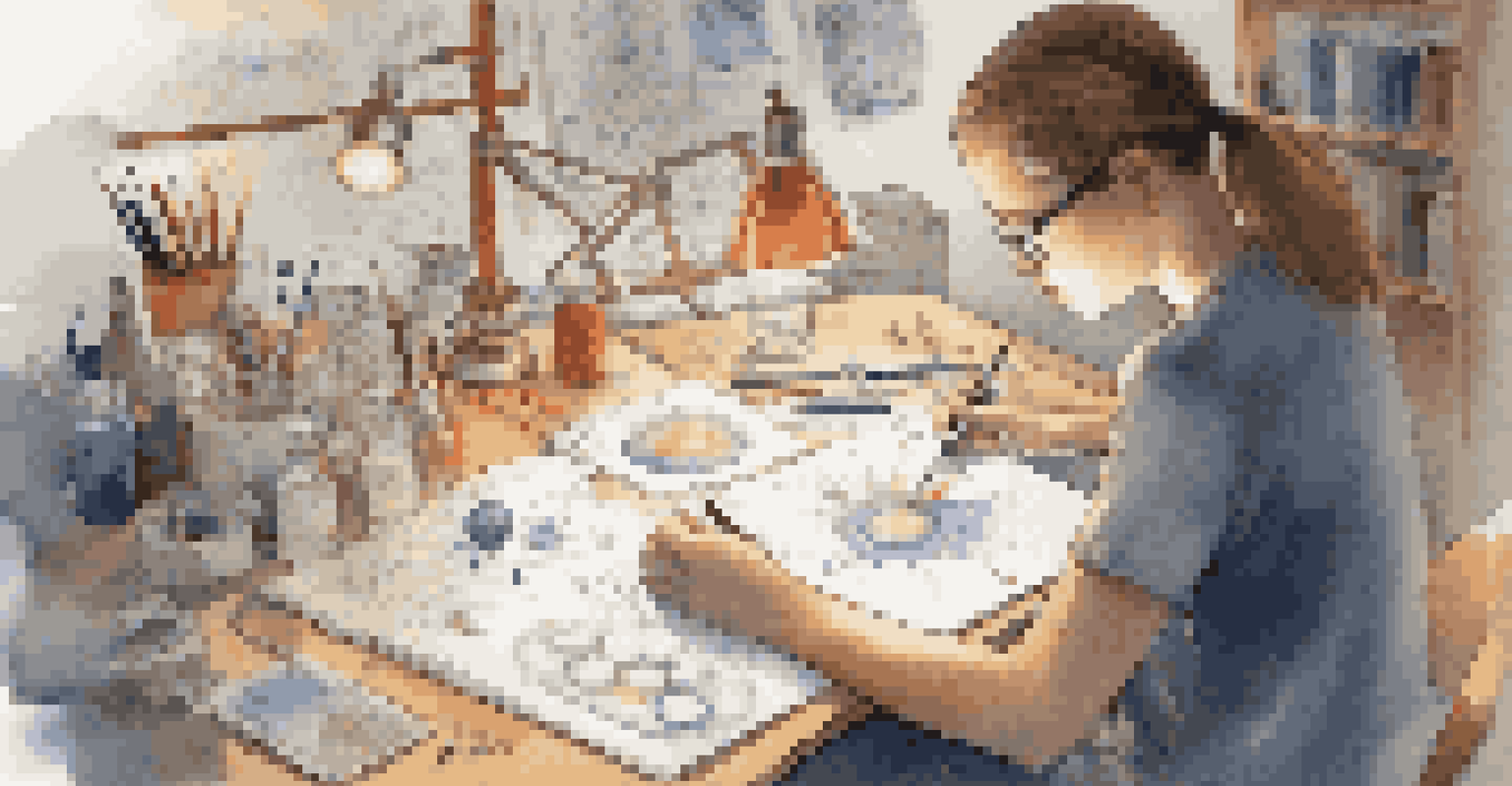Integrating Arts and Sciences to Promote Holistic Education

Understanding Holistic Education and Its Importance
Holistic education focuses on developing the whole person—intellectually, emotionally, socially, and physically. It goes beyond traditional academic learning by fostering creativity, critical thinking, and emotional intelligence. This approach prepares students not just for exams but for life, as they learn to navigate complex challenges.
Education is not the filling of a pail, but the lighting of a fire.
By integrating various disciplines, holistic education encourages students to make connections between subjects. For instance, studying the physics of sound in a music class allows students to appreciate both scientific principles and artistic expression. This interconnectedness fosters a deeper understanding of the world around them.
Moreover, holistic education nurtures empathy and social skills, essential for functioning in diverse environments. When students engage in collaborative projects that merge arts and sciences, they learn teamwork and communication, skills that are invaluable in today’s job market.
The Role of Arts in Enhancing Scientific Understanding
Arts can play a crucial role in enhancing the comprehension of scientific concepts. For example, visual arts can help students visualize complex scientific phenomena, like molecular structures or ecosystems. This visualization makes abstract concepts more tangible and easier to grasp.

Moreover, creative projects, such as creating a documentary on environmental issues, encourage students to research and analyze scientific data. This not only reinforces their scientific knowledge but also enhances their storytelling skills, making the information more accessible to a broader audience.
Holistic Education Develops the Whole Child
This approach nurtures intellectual, emotional, and social skills, preparing students for life beyond academics.
Integrating arts into science education helps cultivate a sense of wonder and curiosity. When students express scientific ideas through artistic mediums, they connect emotionally with the content, making learning more engaging and memorable.
How Sciences Inform and Inspire Artistic Expression
Just as arts can illuminate scientific concepts, sciences can significantly inform artistic expression. Artists often draw inspiration from scientific discoveries, using them as themes or subjects in their works. For instance, the intricate patterns found in nature can inspire stunning visual art pieces.
The essence of education is not to make a living, but to make a life.
Additionally, understanding scientific principles can enhance the technical skills of artists. For instance, knowledge of anatomy is crucial for realistic figure drawing, while an understanding of color theory is rooted in physics. This scientific grounding allows artists to push creative boundaries and innovate.
Furthermore, integrating scientific themes into art can spark conversations about important issues, such as climate change or technology's impact on society. This fusion not only enriches the art but also engages the audience, prompting them to think critically about pressing concerns.
Benefits of a Cross-Disciplinary Curriculum
A cross-disciplinary curriculum that integrates arts and sciences promotes a more engaging learning environment. Students become active participants in their education, exploring topics from multiple perspectives and developing a well-rounded understanding. This approach helps them retain information better than traditional teaching methods.
Moreover, this type of curriculum encourages creativity and innovation. Students are more likely to think outside the box when they can draw from diverse disciplines, leading to unique solutions and ideas. For example, a project involving engineering and sculpture can lead to innovative designs that are both functional and aesthetically pleasing.
Arts Enhance Scientific Understanding
Integrating arts into science education makes complex concepts more tangible and engaging for students.
Additionally, a cross-disciplinary approach prepares students for real-world challenges, where problems often require knowledge from various fields. This adaptability is crucial in today’s fast-paced, interconnected world, where collaboration across disciplines is increasingly important.
Creating Collaborative Learning Experiences
Collaborative learning experiences are vital for integrating arts and sciences effectively. Projects that encourage teamwork help students develop interpersonal skills while tackling complex problems together. For example, a group project that involves designing an eco-friendly product can bring together students from both artistic and scientific backgrounds.
These collaborative initiatives also foster a sense of community within the classroom. Students learn to appreciate each other’s strengths and perspectives, which enhances their overall educational experience. This environment promotes respect and understanding, essential qualities in both personal and professional settings.
Furthermore, when students collaborate across disciplines, they gain insight into different methodologies and thought processes. This exposure broadens their thinking and enhances their problem-solving abilities, preparing them for diverse challenges in their future careers.
The Importance of Teacher Training in Holistic Education
For the successful integration of arts and sciences in education, teacher training is crucial. Educators must be equipped with the skills and knowledge to facilitate cross-disciplinary learning effectively. Professional development programs that focus on holistic education can empower teachers to innovate their teaching practices.
Moreover, trained educators can create a supportive learning environment that encourages risk-taking and creativity. When teachers model interdisciplinary thinking, they inspire students to explore connections between subjects, fostering a culture of inquiry and exploration.
Collaborative Learning Fosters Innovation
Cross-disciplinary projects encourage teamwork and creativity, equipping students with essential real-world skills.
Ultimately, investing in teacher training ensures that educators are well-prepared to implement holistic education strategies. This investment not only benefits teachers but also positively impacts students, leading to a more enriching and comprehensive educational experience.
Real-World Examples of Integrated Education Success
Across the globe, several educational institutions have successfully integrated arts and sciences, showcasing the effectiveness of this approach. For instance, schools that have adopted project-based learning often report higher student engagement and achievement. These projects encourage students to explore real-world problems through a creative lens, leading to meaningful learning experiences.
Another example is the STEAM movement, which adds 'Arts' to the traditional STEM (Science, Technology, Engineering, and Mathematics) curriculum. Schools implementing STEAM programs have seen increased student interest in both the arts and sciences, as students recognize the value of creativity in scientific inquiry.

These examples demonstrate that integrating arts and sciences is not just a theoretical concept but a practical approach yielding positive results. By examining successful models, other educational institutions can learn and adapt their curricula to foster holistic education.